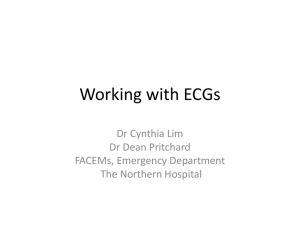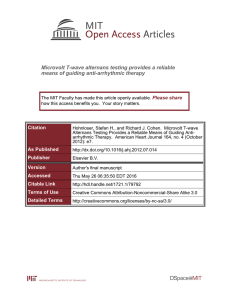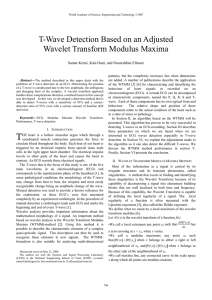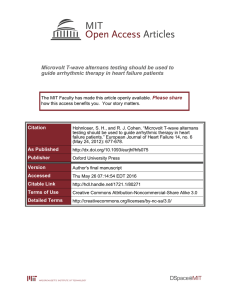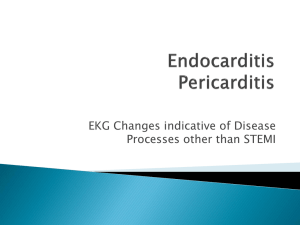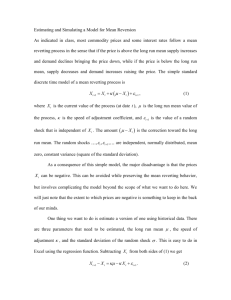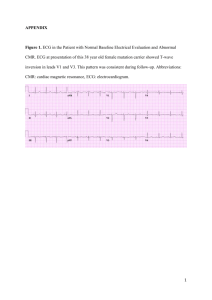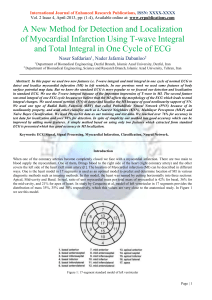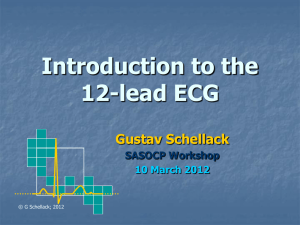t-wave reversion during exercise stress testing in pediatric patients
advertisement
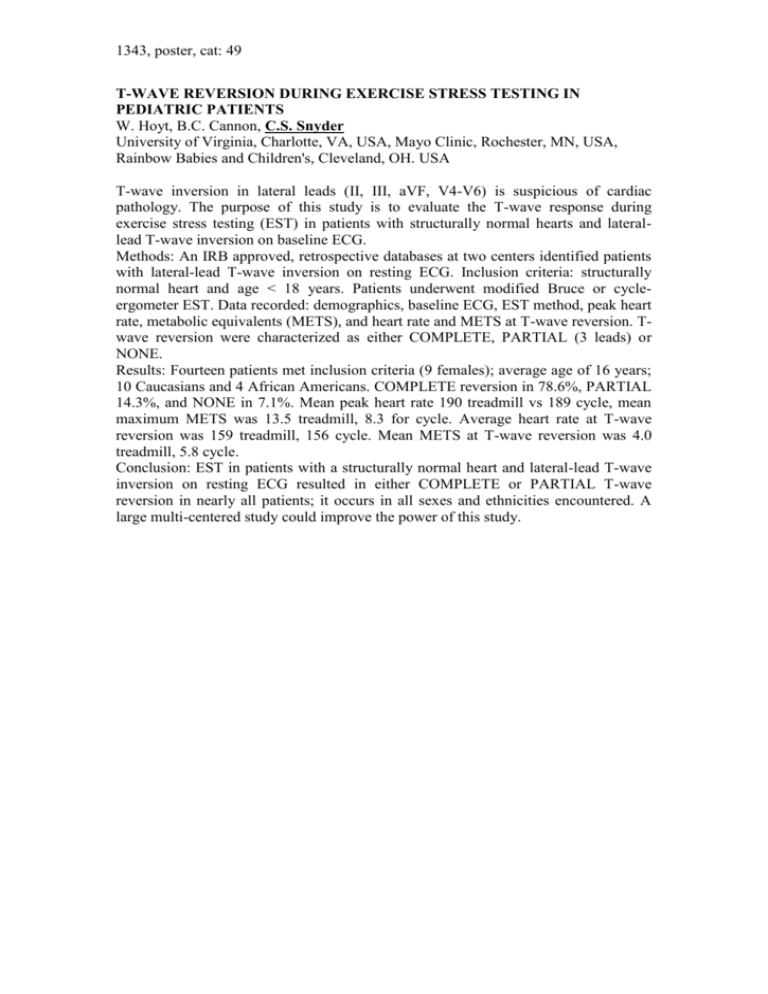
1343, poster, cat: 49 T-WAVE REVERSION DURING EXERCISE STRESS TESTING IN PEDIATRIC PATIENTS W. Hoyt, B.C. Cannon, C.S. Snyder University of Virginia, Charlotte, VA, USA, Mayo Clinic, Rochester, MN, USA, Rainbow Babies and Children's, Cleveland, OH. USA T-wave inversion in lateral leads (II, III, aVF, V4-V6) is suspicious of cardiac pathology. The purpose of this study is to evaluate the T-wave response during exercise stress testing (EST) in patients with structurally normal hearts and laterallead T-wave inversion on baseline ECG. Methods: An IRB approved, retrospective databases at two centers identified patients with lateral-lead T-wave inversion on resting ECG. Inclusion criteria: structurally normal heart and age < 18 years. Patients underwent modified Bruce or cycleergometer EST. Data recorded: demographics, baseline ECG, EST method, peak heart rate, metabolic equivalents (METS), and heart rate and METS at T-wave reversion. Twave reversion were characterized as either COMPLETE, PARTIAL (3 leads) or NONE. Results: Fourteen patients met inclusion criteria (9 females); average age of 16 years; 10 Caucasians and 4 African Americans. COMPLETE reversion in 78.6%, PARTIAL 14.3%, and NONE in 7.1%. Mean peak heart rate 190 treadmill vs 189 cycle, mean maximum METS was 13.5 treadmill, 8.3 for cycle. Average heart rate at T-wave reversion was 159 treadmill, 156 cycle. Mean METS at T-wave reversion was 4.0 treadmill, 5.8 cycle. Conclusion: EST in patients with a structurally normal heart and lateral-lead T-wave inversion on resting ECG resulted in either COMPLETE or PARTIAL T-wave reversion in nearly all patients; it occurs in all sexes and ethnicities encountered. A large multi-centered study could improve the power of this study.
